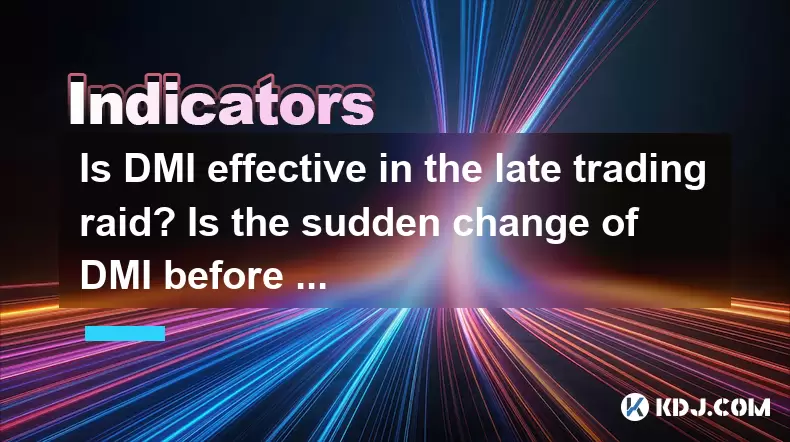-
 Bitcoin
Bitcoin $118200
0.49% -
 Ethereum
Ethereum $3580
0.33% -
 XRP
XRP $3.429
-0.49% -
 Tether USDt
Tether USDt $1.000
-0.05% -
 BNB
BNB $734.1
0.18% -
 Solana
Solana $177.7
0.26% -
 USDC
USDC $0.9999
-0.01% -
 Dogecoin
Dogecoin $0.2434
4.12% -
 TRON
TRON $0.3203
-1.58% -
 Cardano
Cardano $0.8334
1.59% -
 Hyperliquid
Hyperliquid $44.70
2.39% -
 Stellar
Stellar $0.4636
-1.10% -
 Sui
Sui $3.789
-0.43% -
 Chainlink
Chainlink $18.49
4.03% -
 Hedera
Hedera $0.2674
-0.08% -
 Avalanche
Avalanche $25.08
6.37% -
 Bitcoin Cash
Bitcoin Cash $520.4
1.12% -
 Shiba Inu
Shiba Inu $0.00001495
1.88% -
 Litecoin
Litecoin $112.5
9.34% -
 UNUS SED LEO
UNUS SED LEO $8.994
0.24% -
 Toncoin
Toncoin $3.209
-0.74% -
 Polkadot
Polkadot $4.393
2.95% -
 Uniswap
Uniswap $10.16
-0.07% -
 Monero
Monero $325.2
1.09% -
 Ethena USDe
Ethena USDe $1.001
0.00% -
 Bitget Token
Bitget Token $4.898
-1.03% -
 Pepe
Pepe $0.00001326
0.54% -
 Dai
Dai $1.000
0.02% -
 Aave
Aave $317.2
-0.43% -
 Cronos
Cronos $0.1214
0.07%
Is DMI effective in the late trading raid? Is the sudden change of DMI before the closing credible?
DMI can be useful in late trading raids, but its effectiveness depends on market volatility and time frames; always confirm signals with other indicators.
May 22, 2025 at 11:07 pm

Understanding DMI in Cryptocurrency Trading
Directional Movement Index (DMI), often referred to simply as DMI, is a technical analysis tool used by traders to assess the strength and direction of a price trend. In the context of cryptocurrency trading, DMI can be particularly useful for identifying potential entry and exit points. The DMI consists of three lines: the Positive Directional Indicator (+DI), the Negative Directional Indicator (-DI), and the Average Directional Index (ADX). The +DI measures the upward movement, the -DI measures the downward movement, and the ADX indicates the strength of the trend.
DMI's Role in Late Trading Raids
Late trading raids refer to the sudden price movements that occur towards the end of a trading session. These movements can be driven by various factors, including news releases, large trades, or market manipulation. The question of whether DMI is effective in these scenarios hinges on its ability to provide reliable signals during these volatile periods.
When it comes to late trading raids, DMI's effectiveness depends on several factors. Firstly, the volatility of the market can lead to false signals. If the market is highly volatile, the DMI lines might cross frequently, leading to confusion and potentially incorrect trading decisions. Secondly, the time frame used for the DMI can affect its reliability. Shorter time frames might capture more immediate movements but can also be more susceptible to noise and less reliable in predicting sustained trends.
Analyzing DMI's Sudden Changes Before Closing
The sudden changes in DMI before the closing of a trading session can be both credible and misleading. These changes can be influenced by several factors, including last-minute trades and news releases. When DMI lines cross or the ADX spikes suddenly, it might signal a strong trend or a reversal. However, traders need to consider the context and corroborate these signals with other indicators.
For instance, if the +DI crosses above the -DI just before the closing, it might suggest a bullish trend. However, if this change is not supported by other indicators like volume or other momentum indicators, it might be a false signal. Similarly, a sudden increase in the ADX might indicate a strengthening trend, but traders should be cautious and look for confirmation from other sources.
Practical Application of DMI in Late Trading Raids
To effectively use DMI during late trading raids, traders need to follow a structured approach. Here's how you can apply DMI in such scenarios:
- Monitor the DMI lines closely: Pay attention to the crossings of the +DI and -DI lines. A crossover can indicate a potential trend change.
- Check the ADX value: If the ADX is above 25, it suggests a strong trend. If it's below 20, the trend might be weak, and the DMI signals might be less reliable.
- Use other indicators for confirmation: Combine DMI with other indicators like the Relative Strength Index (RSI) or Moving Averages to confirm the signals.
- Be cautious of volatility: In highly volatile markets, DMI signals might be less reliable. Consider using a longer time frame to filter out noise.
Case Studies: DMI in Action During Late Trading Raids
To better understand DMI's effectiveness in late trading raids, let's look at a couple of case studies. In one instance, a late trading raid occurred in Bitcoin (BTC) just before the closing of a trading session. The +DI crossed above the -DI, and the ADX spiked to 30, suggesting a strong bullish trend. Traders who entered based on this signal saw a significant price increase in the following session. However, this signal was also supported by a surge in trading volume and positive news about Bitcoin adoption.
In another case, a late trading raid in Ethereum (ETH) saw the -DI cross above the +DI, indicating a potential bearish trend. The ADX was at 28, suggesting a strong trend. However, this signal was not supported by other indicators, and the price quickly reversed in the next session. This example highlights the importance of using DMI in conjunction with other indicators to avoid false signals.
Limitations and Considerations
While DMI can be a valuable tool in late trading raids, it has its limitations. Firstly, DMI is a lagging indicator, meaning it reacts to price changes rather than predicting them. This can lead to delayed signals during fast-moving markets. Secondly, DMI works best in trending markets. In sideways or choppy markets, the DMI signals might be less reliable.
Traders should also consider the overall market sentiment and external factors that might influence late trading raids. For instance, regulatory news, macroeconomic events, or large institutional trades can significantly impact the market and potentially skew DMI signals.
Frequently Asked Questions
Q: Can DMI be used effectively in all cryptocurrency markets?
A: DMI's effectiveness can vary depending on the specific cryptocurrency and market conditions. It works best in markets with clear trends and might be less reliable in highly volatile or sideways markets. Traders should always consider the specific characteristics of the cryptocurrency they are trading.
Q: How often should I check DMI signals during late trading raids?
A: During late trading raids, it's advisable to monitor DMI signals closely, especially in the last 30 minutes of the trading session. However, frequent checking might lead to overtrading and reacting to false signals. A balanced approach, combining DMI with other indicators and market analysis, is recommended.
Q: Is it better to use DMI on shorter or longer time frames during late trading raids?
A: The choice of time frame depends on your trading strategy. Shorter time frames can capture immediate movements but might be more susceptible to noise. Longer time frames can provide more reliable signals but might miss out on quick opportunities. A combination of both can be useful, using shorter time frames for entry and longer ones for trend confirmation.
Q: Can DMI signals be used to predict late trading raids?
A: DMI is a lagging indicator and cannot predict late trading raids. It can, however, help traders identify potential trends and make informed decisions during these events. For predictive analysis, traders might need to combine DMI with leading indicators or market sentiment analysis.
Disclaimer:info@kdj.com
The information provided is not trading advice. kdj.com does not assume any responsibility for any investments made based on the information provided in this article. Cryptocurrencies are highly volatile and it is highly recommended that you invest with caution after thorough research!
If you believe that the content used on this website infringes your copyright, please contact us immediately (info@kdj.com) and we will delete it promptly.
- Tinubu, the North, and Appointments: Too Little, Too Late?
- 2025-07-20 03:20:15
- Stellar Blade Hacked: When Crypto Scams Target Your Favorite Games
- 2025-07-20 03:50:12
- MoonBull, Doginme, and Meme Coins: What's the Buzz in 2025?
- 2025-07-20 03:50:12
- Dogecoin's Wild Ride: Price Forecast & the Utility Sector Buzz
- 2025-07-20 03:55:12
- Tinubu's Appointments: A Northern Perspective
- 2025-07-20 03:55:12
- Tinubu's Northern Appointments: A Cynical Ploy or Genuine Inclusion?
- 2025-07-20 04:00:12
Related knowledge

Advanced RSI strategies for crypto
Jul 13,2025 at 11:01am
Understanding the Basics of RSI in Cryptocurrency TradingThe Relative Strength Index (RSI) is a momentum oscillator used to measure the speed and chan...

Crypto RSI for day trading
Jul 12,2025 at 11:14am
Understanding RSI in the Context of Cryptocurrency TradingThe Relative Strength Index (RSI) is a momentum oscillator used to measure the speed and cha...

Crypto RSI for scalping
Jul 12,2025 at 11:00pm
Understanding RSI in the Context of Crypto TradingThe Relative Strength Index (RSI) is a momentum oscillator widely used by traders to measure the spe...

What does an RSI of 30 mean in crypto
Jul 15,2025 at 07:07pm
Understanding RSI in Cryptocurrency TradingRelative Strength Index (RSI) is a momentum oscillator widely used in cryptocurrency trading to measure the...

What does an RSI of 70 mean in crypto
Jul 13,2025 at 06:07pm
Understanding the RSI Indicator in Cryptocurrency TradingThe Relative Strength Index (RSI) is a widely used technical analysis tool that helps traders...

Does RSI work in a bear market for crypto
Jul 16,2025 at 01:36pm
Understanding RSI in Cryptocurrency TradingThe Relative Strength Index (RSI) is a momentum oscillator used by traders to measure the speed and change ...

Advanced RSI strategies for crypto
Jul 13,2025 at 11:01am
Understanding the Basics of RSI in Cryptocurrency TradingThe Relative Strength Index (RSI) is a momentum oscillator used to measure the speed and chan...

Crypto RSI for day trading
Jul 12,2025 at 11:14am
Understanding RSI in the Context of Cryptocurrency TradingThe Relative Strength Index (RSI) is a momentum oscillator used to measure the speed and cha...

Crypto RSI for scalping
Jul 12,2025 at 11:00pm
Understanding RSI in the Context of Crypto TradingThe Relative Strength Index (RSI) is a momentum oscillator widely used by traders to measure the spe...

What does an RSI of 30 mean in crypto
Jul 15,2025 at 07:07pm
Understanding RSI in Cryptocurrency TradingRelative Strength Index (RSI) is a momentum oscillator widely used in cryptocurrency trading to measure the...

What does an RSI of 70 mean in crypto
Jul 13,2025 at 06:07pm
Understanding the RSI Indicator in Cryptocurrency TradingThe Relative Strength Index (RSI) is a widely used technical analysis tool that helps traders...

Does RSI work in a bear market for crypto
Jul 16,2025 at 01:36pm
Understanding RSI in Cryptocurrency TradingThe Relative Strength Index (RSI) is a momentum oscillator used by traders to measure the speed and change ...
See all articles

























































































